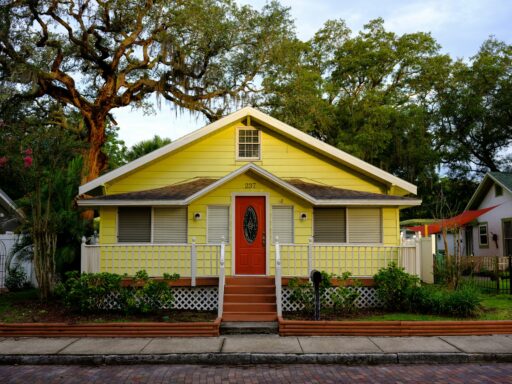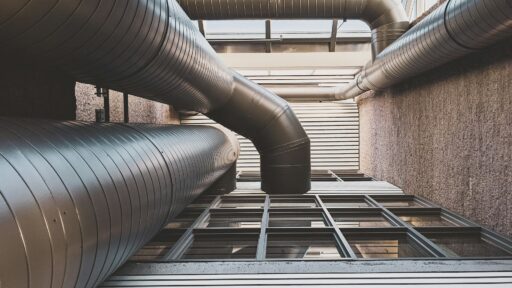Wildfires pose a significant threat to homes in particularly vulnerable areas. Preparing a property can help mitigate potential damage and increase safety. By taking proactive steps, homeowners can safeguard their investments and ensure the well-being of their families. This guide explores essential measures to prepare a home for wildfire threats effectively.
Assessing Risk
So, how do you prepare your home for a wildfire? First and foremost, understand the level of risk in your particular area. This is crucial, so make sure to gather all the precise facts. Your local fire department or a related office can provide you with all the precise details. When we study past wildfires in this area, it really shows us what to expect. Identifying dangerous areas near your building helps you prioritize where to focus your protective efforts. Awareness is the first step in effective preparation.
Creating Defensible Space
Think of it as your home’s shield. That clear area nearby helps keep it out of harm’s way. You’ll want to clear away all the plant growth and scattered junk from a set distance around the site. Keeping the area around your building clear reduces the risk of fire spreading. Regularly trimming trees and shrubs can prevent fire from reaching the home. This spot simply blocks any fire coming its way.
Using Fire-Resistant Materials
Choosing building materials that are resistant to fire makes homes, especially old structures, safer. For roofing, non-combustible options such as metal or tile are advisable. Siding materials like stucco or brick offer better protection than wood. Installing tempered glass windows can prevent breakage due to heat. You’ll appreciate how well these hold up during a blaze.
Ensuring Regular Maintenance
Routine maintenance is essential for fire preparedness. Cleaning gutters and roofs reduces the accumulation of flammable debris. Regularly inspecting the property for potential hazards can avert risks. Maintaining a well-watered lawn and landscape decreases fire susceptibility. Consistent upkeep ensures that the home remains less vulnerable to ignition.
Chalking Out an Emergency Plan
An emergency plan is crucial for family safety. Establishing evacuation routes and meeting points ensures that everyone knows what to do in the event of a fire. Practicing these plans regularly helps family members remain calm and organized in an emergency. Grab a list for your must-have items, and you’ll skip the rush and feel much calmer.
Doing Fire-Resistant Landscaping
Your plant choices directly impact the safety of your home from fire. Opting for fire-resistant plants can slow the spread of flames. Native plants are often more adaptable to local conditions and less prone to burning. Mulching with non-flammable materials, such as gravel, can further reduce risks. Smart landscaping looks good. It also makes areas safer.
Installing Firebreaks
Firebreaks are barriers that can halt the progress of a wildfire. You’ll find them as natural landmarks, such as flowing rivers, or as man-made structures we build, like roads. You’ll feel much safer when you set up these barriers right by your property line. Firebreaks slow or halt a blaze, buying precious time for crews to react.
Utilizing Technology
Smart devices prepare us. They help fight wildfires. Homeowners can install smoke detectors and fire alarms that connect to mobile devices. These systems alert people early, allowing them to clear out sooner. Smart home technology can automate your sprinklers, helping yards stay moist and less likely to dry out and burn, and being prepared matters. Good technology makes it that much easier.
Staying Involved in the Local Community
Engaging with the community strengthens wildfire preparedness. Joining local fire safety programs or groups can provide support and resources. Neighborhood collaboration ensures that everyone is informed and ready. Community efforts can include group clean-up days or shared resources. When we collaborate, our neighborhood becomes a more secure place.
Taking Out an Insurance Policy
Having adequate insurance is essential for financial protection. Pull out your home insurance papers and review them to confirm that they clearly state you’re protected from wildfire damage. When you truly understand your coverage, you’ll be better equipped to handle future problems. Speaking with insurance agents can clarify terms and conditions. You can breathe easier knowing your finances are shielded from unexpected problems. That’s the real security a solid insurance plan provides.
Staying Informed
Staying updated with local weather reports and fire alerts is crucial. Catching the latest news and alerts enables us to respond quickly when situations change. Social media and official websites can provide real-time updates. Homeowners who are aware of the situation can act quickly to keep their house and family safe.
Conclusion
Preparing your house for a wildfire requires thoughtful planning and prompt action. Keeping homes safe means identifying dangers, creating a buffer zone, and selecting durable building materials. Staying on top of upkeep and bringing the community together makes us much more ready. Following these steps protects homes. It also keeps families safe from wildfire dangers.








